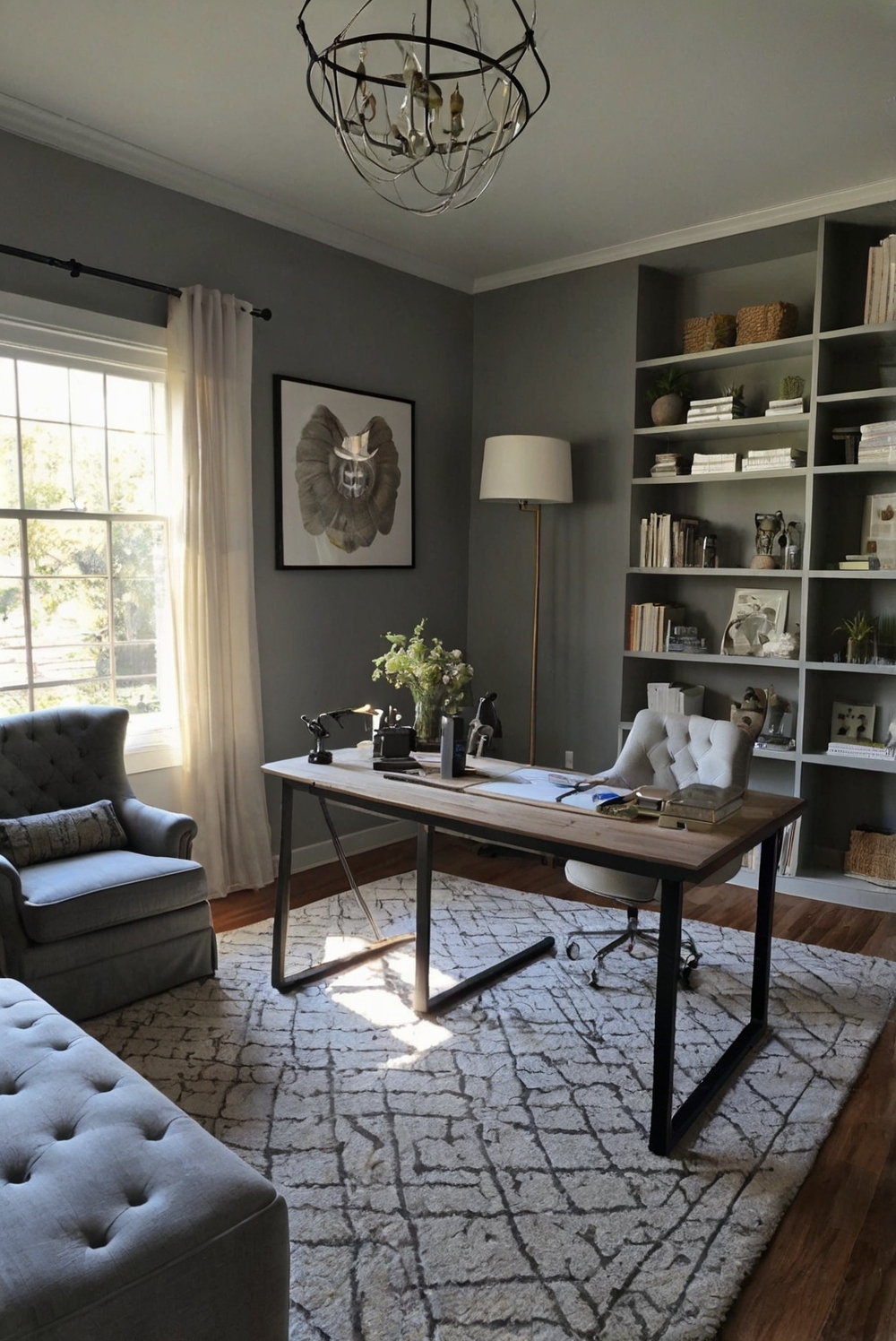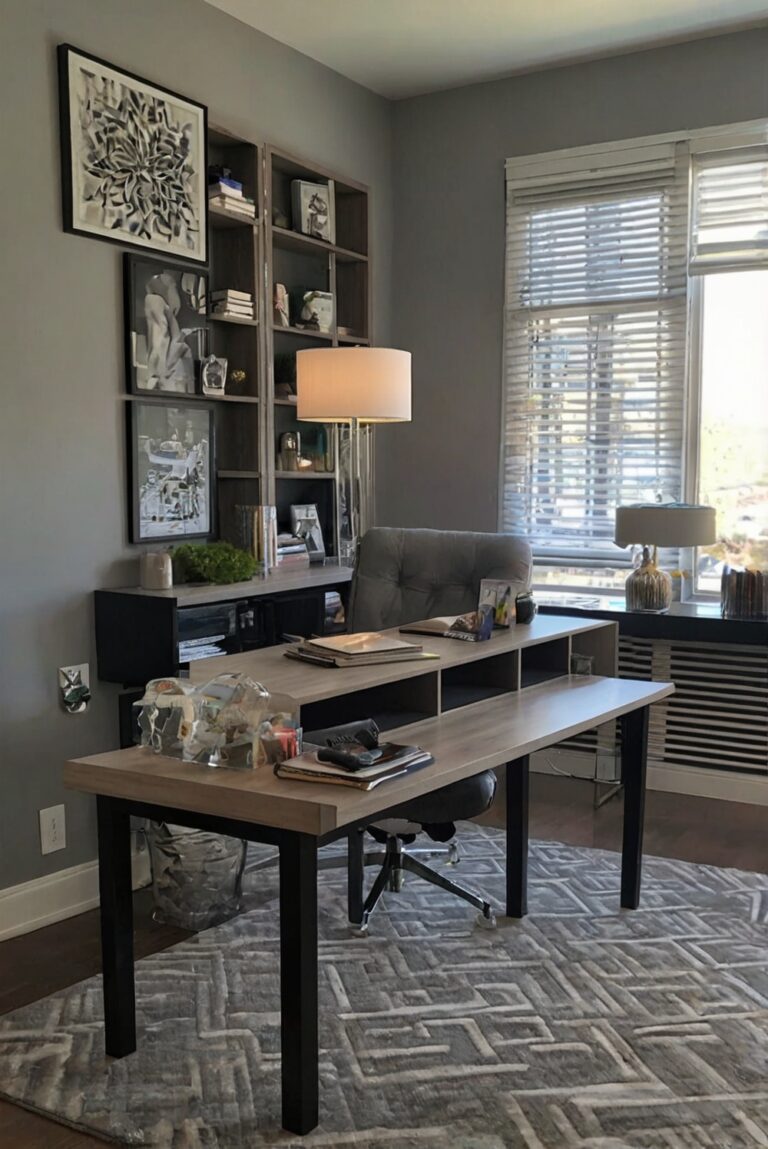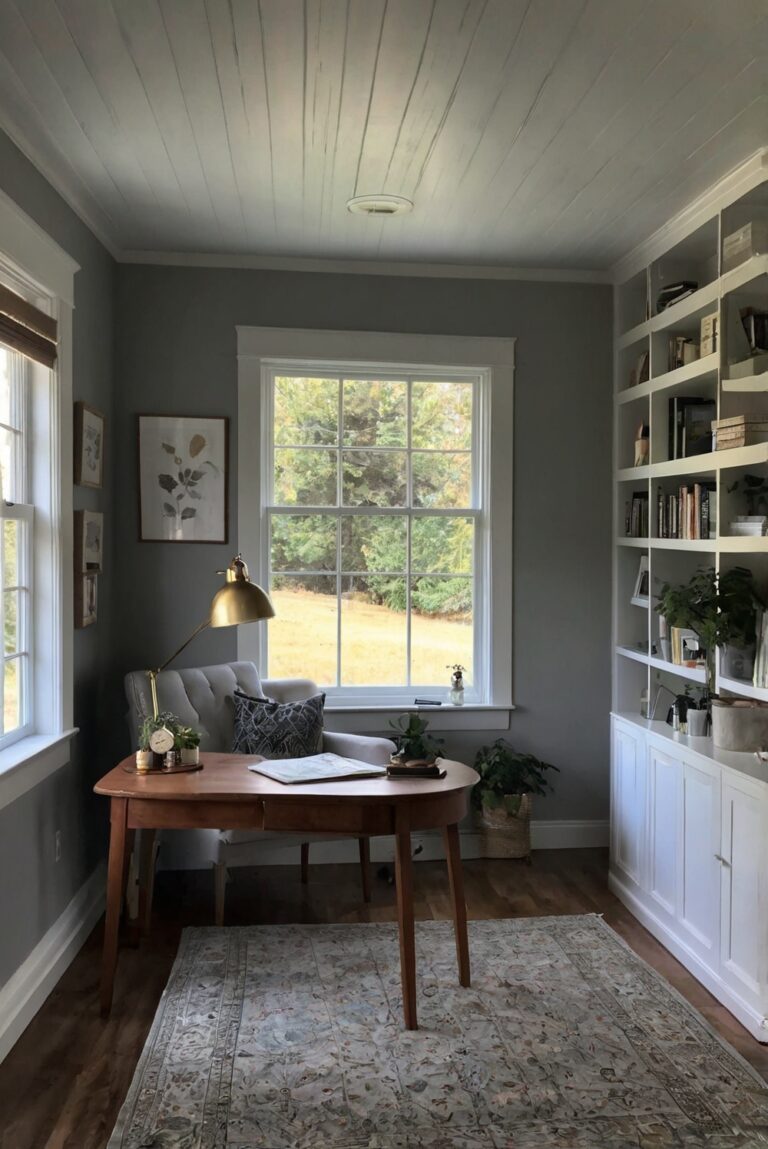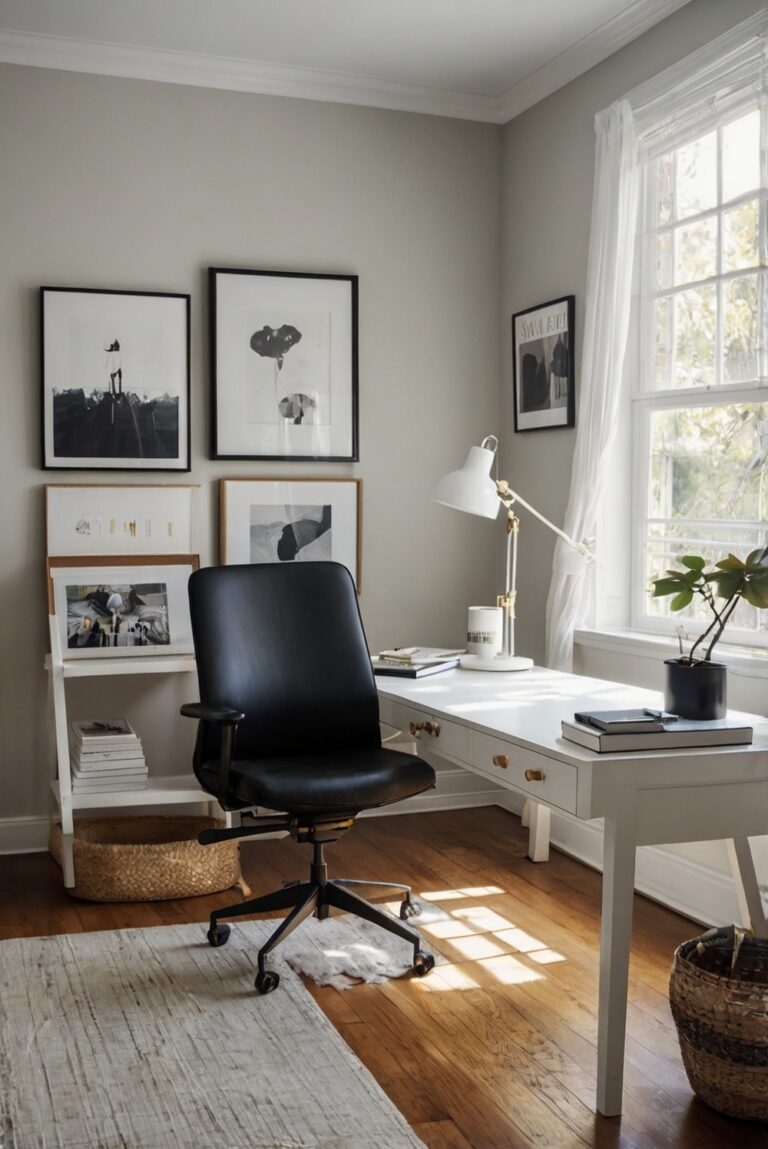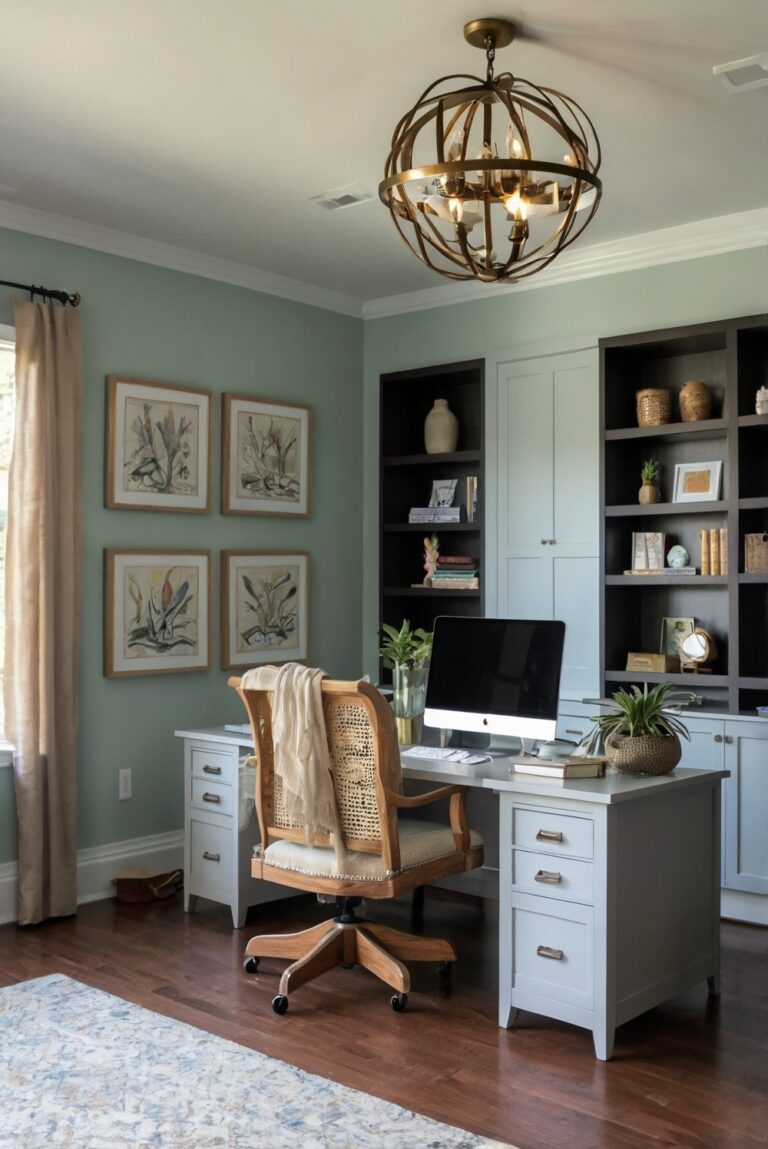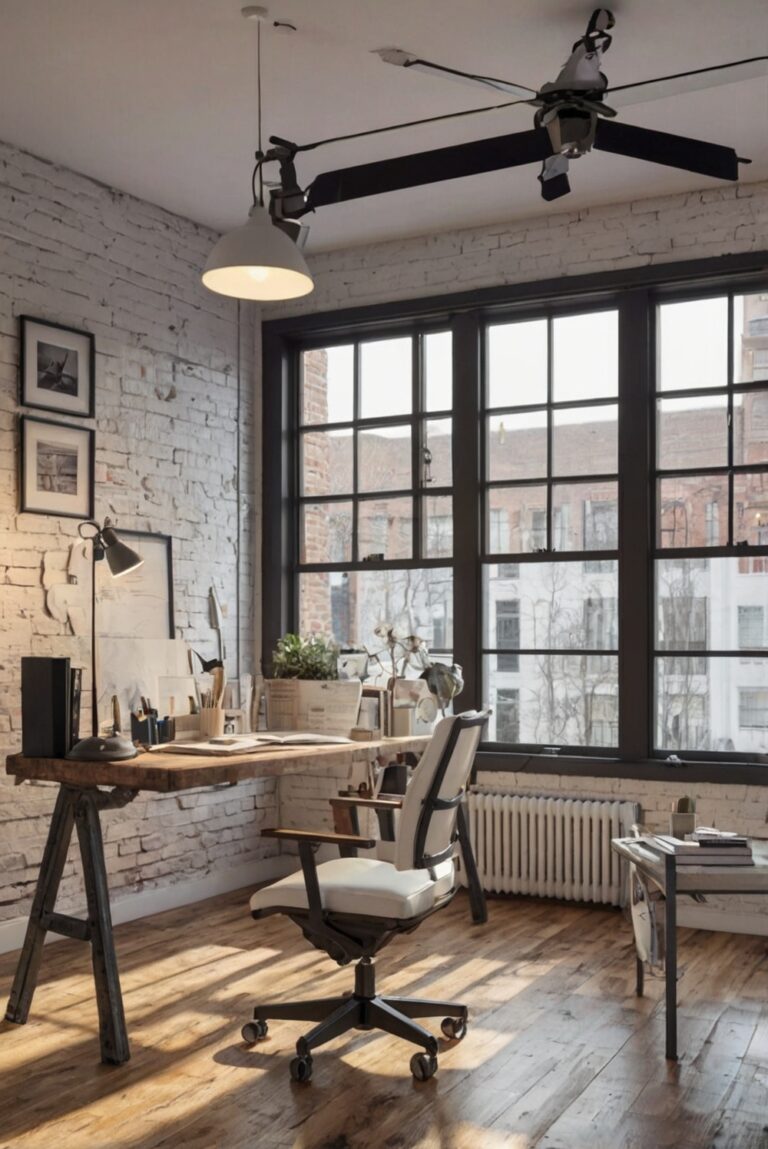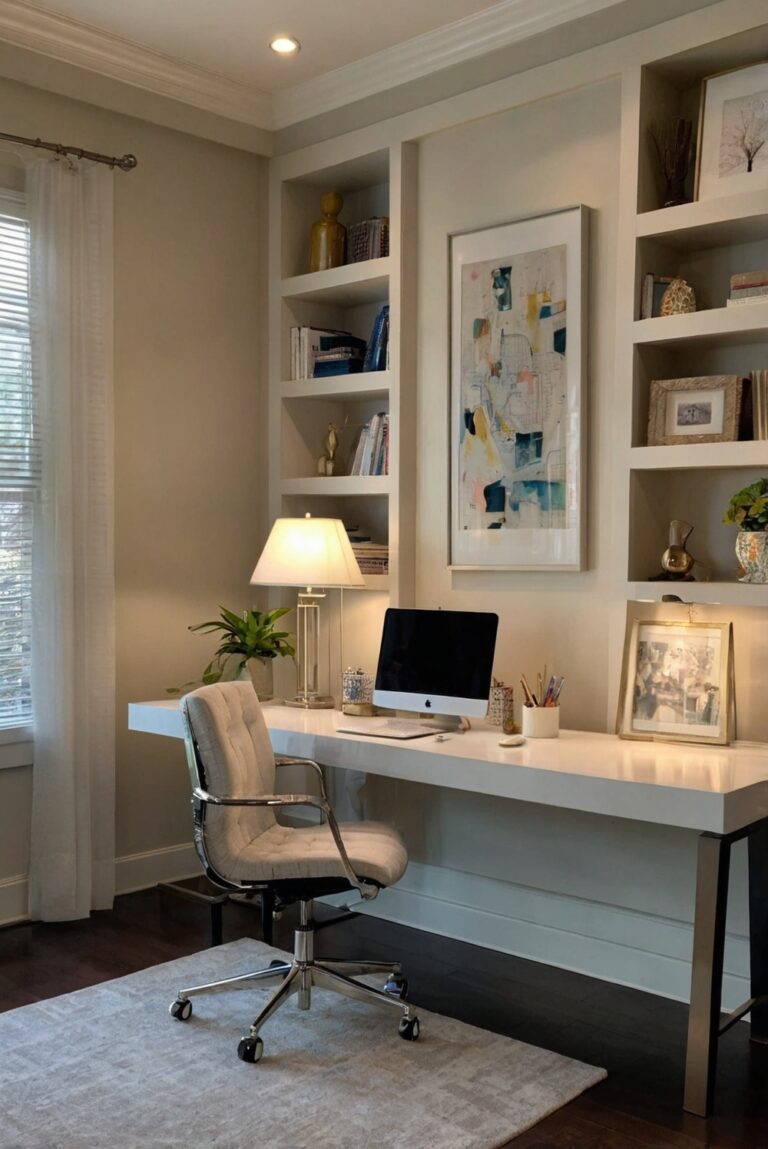How to create a productive workspace at home?
Transform your home office into a dynamic and efficient workspace with expert tips and engaging decor ideas. Dive into daily routines for interior design success.
To create a productive workspace at home, start by decluttering and organizing your space. Choose a quiet area with good lighting and ergonomic furniture. Incorporate elements of home decorating that inspire and motivate you, such as plants, artwork, or personal items. Consider implementing space planning and interior design principles to optimize your layout and workflow. Use calming colors like light blues or greens for a peaceful environment. Make sure to match your wall paint colors to create a cohesive look. By following these tips and tricks, you can design a functional and stylish home office that boosts your productivity.
Design:
Creating a productive workspace at home starts with the design. **Choose a quiet and well-lit area** in your home where you can set up your workspace. Make sure the area is clutter-free and has good ventilation. **Invest in a comfortable desk and chair** to prevent back pain and discomfort during long hours of work. Consider adding plants or artwork to make the space more visually appealing and inspiring.
Organization:
**Keep your workspace organized** to boost productivity. Use shelves, drawers, or organizers to store supplies and keep your desk tidy. **Label everything** to easily find what you need. **Create a filing system** for documents and papers to avoid clutter. A clutter-free workspace can help clear your mind and enhance focus.
Technology:
**Ensure you have the necessary technology** to work efficiently from home. This includes a reliable internet connection, a computer or laptop, a printer, and any other tools specific to your job. **Set up your devices in an ergonomic way** to prevent strain on your eyes, neck, and wrists. Consider investing in noise-canceling headphones if you need to block out distractions.
Lighting:
**Good lighting is essential** for a productive workspace. **Natural light is the best option**, so position your desk near a window if possible. If natural light is limited, invest in a good desk lamp that provides bright, adjustable lighting. Avoid harsh overhead lighting that can cause glare on your screen or strain your eyes.
Ergonomics:
**Ergonomics play a crucial role** in creating a comfortable and productive workspace. **Adjust your chair to the right height** so your feet are flat on the floor and your knees are at a 90-degree angle. Position your computer screen at eye level to prevent neck strain. Use a wrist rest to support your wrists while typing. Taking care of your physical well-being can improve your focus and efficiency.
In conclusion, creating a productive workspace at home requires careful consideration of design, organization, technology, lighting, and ergonomics. By following these guidelines and setting up a workspace that suits your needs and preferences, you can enhance your productivity and overall well-being while working from home. Remember to personalize your workspace to make it a comfortable and inspiring environment that motivates you to do your best work.
1. How can I design a productive workspace at home?
Creating a productive workspace at home involves choosing a quiet and well-lit area, preferably a separate room or a corner with minimal distractions. Invest in a comfortable chair and a desk that suits your needs. Organize your space by decluttering and keeping only essential items on your desk. Personalize your workspace with plants or inspirational quotes to boost creativity and motivation. Make sure you have proper lighting to reduce eye strain. Establish a routine and set boundaries to differentiate between work and personal life.
2. What equipment should I have in my home workspace?
Equip your home workspace with essential items such as a reliable computer or laptop, a high-speed internet connection, a comfortable chair with good back support, a functional desk, and proper lighting. Consider investing in noise-canceling headphones to block out distractions. A printer, scanner, and office supplies like pens, notebooks, and a filing system can also enhance your productivity. Depending on your work requirements, additional equipment like a second monitor, a standing desk, or a whiteboard may be beneficial.
3. How can I stay organized and focused in my home workspace?
To stay organized and focused in your home workspace, establish a daily routine and set specific work hours. Use tools like calendars, to-do lists, and digital apps to prioritize tasks and track deadlines. Implement a filing system to organize paperwork and create a clutter-free environment. Minimize distractions by setting boundaries with family members and using noise-canceling headphones. Take regular breaks, stay hydrated, and incorporate physical activity into your day to maintain focus and productivity.
4. What are some tips for maintaining work-life balance in a home workspace?
Maintaining work-life balance in a home workspace is crucial for overall well-being. Set boundaries by establishing designated work hours and creating a separate workspace away from personal areas. Schedule breaks to recharge and avoid burnout. Communicate your availability to family members or housemates to minimize interruptions during work hours. Engage in activities outside of work, such as exercise, hobbies, or spending time with loved ones, to maintain a healthy balance. Prioritize self-care and relaxation to prevent work from encroaching on personal time.
5. How can I enhance productivity in my home workspace?
To enhance productivity in your home workspace, prioritize tasks based on urgency and importance. Break down projects into manageable steps and set realistic goals. Use time-management techniques like the Pomodoro method to stay focused and maintain momentum. Eliminate distractions by turning off notifications, setting boundaries, and creating a conducive work environment. Stay organized by decluttering regularly and maintaining a clean workspace. Incorporate regular breaks, healthy snacks, and hydration to sustain energy levels throughout the day. Experiment with different productivity tools and techniques to find what works best for you.

